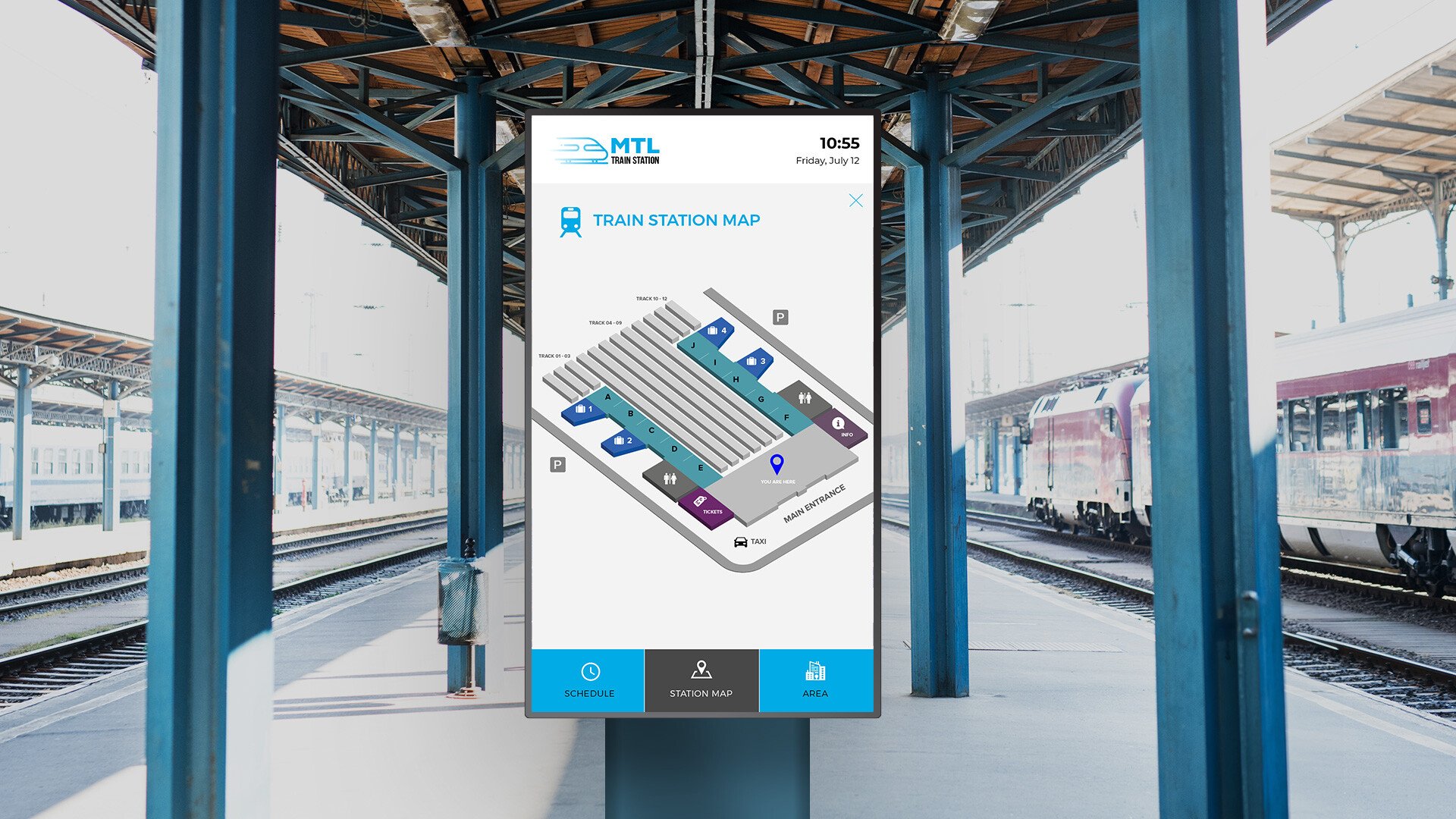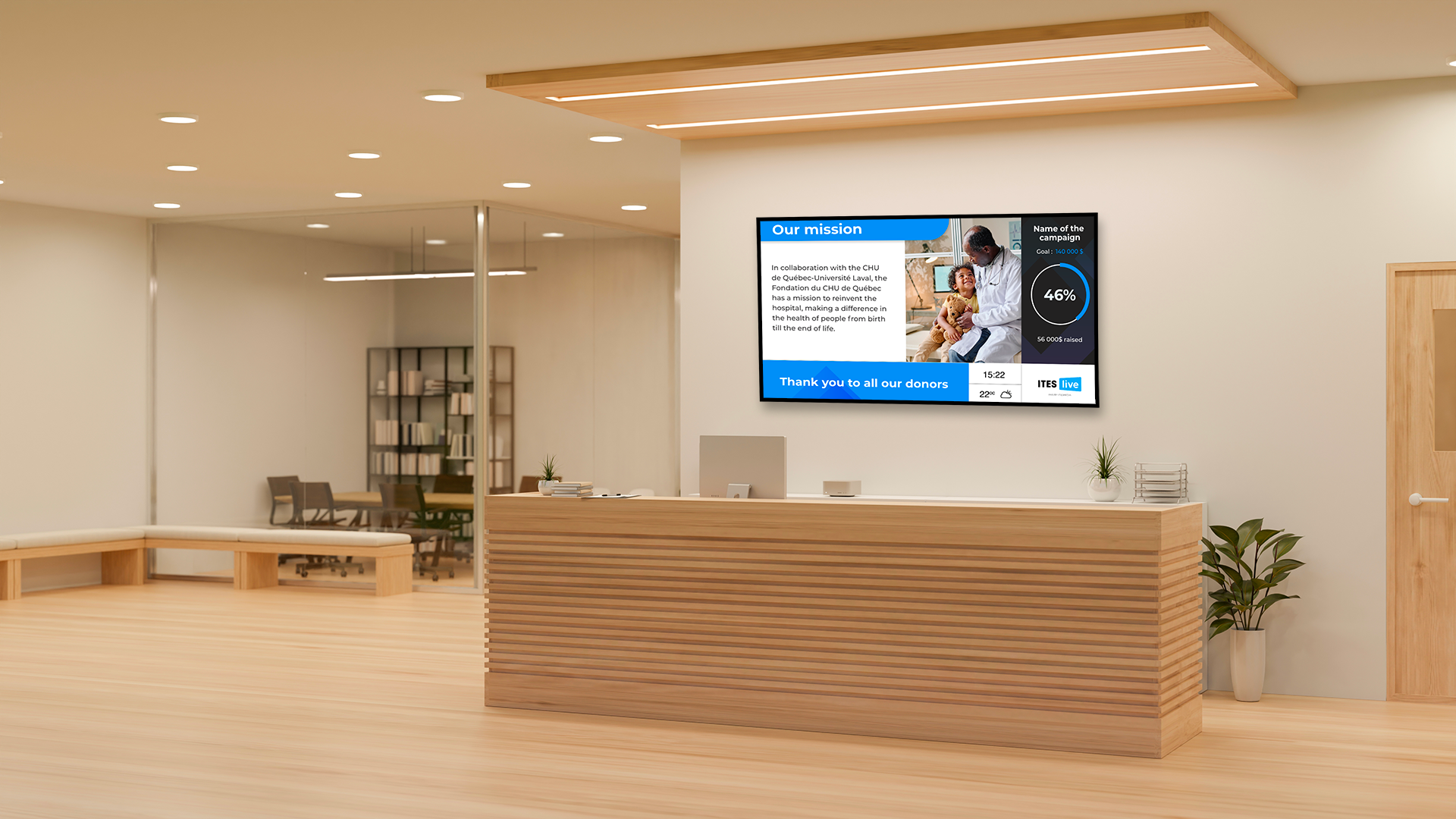Inside train stations, the most frequently asked questions asked by users are “How can I go to X?”, “At what time does the next train to Y leave?”, “Where are the washrooms?”, “Where can I buy a ticket?”, etc. These questions can cause confusion for users and add to the workload of employees who must answer the same questions every day.
To lighten the workload of employees and mitigate ambiguity and frustration for users, passenger information system kioks equipped with a Wayfinding feature are usually installed in strategic locations inside train or subway stations or at bus stops.
Interactive guidance system (« Wayfinding »)
These kiosks using a Wayfinding feature help users easily find their way without having to ask an employee for basic information. This way, employees can spend more time on more important and valuable tasks. With the interactive map, travellers can find the best way to reach specific locations, see the schedules of upcoming trains, subways, or buses, and even find local points of interest such as nearby restaurants, hotels, or attractions.
Making employees’ work easier
These kioks help significantly decrease requests for assistance for repetitive information such as directions or schedules. Employees will consequently spend less time doing low added-value tasks and be able to focus on more complex requests and improve their level of service. Furthermore, users feel less frustration when they can access these kioks.
An improved transit experience
This interactive guidance system not only improves the flow of transit systems, but it also plays an important part in improving the user experience. By easily accessing relevant and updated information, users feel a greater feeling of control and satisfaction during their trip. This system also makes stations feel more welcoming and transforms simple trips into a more pleasant experience.
Integrating these interactive kioks in public transit infrastructures demonstrate how technology can both facilitate the users’ journey and optimize the internal operations of stations. This is a true win-win solution where increased efficiency translates into improved user satisfaction.






